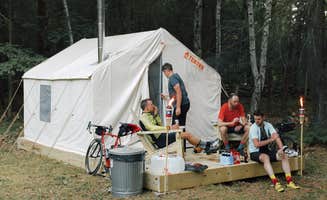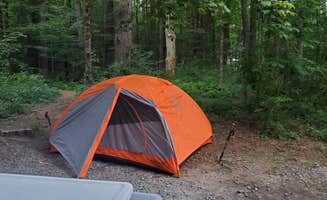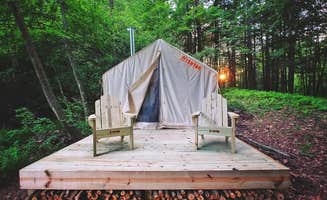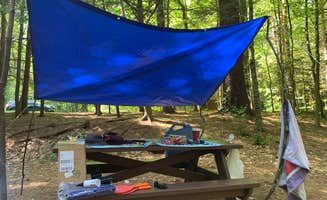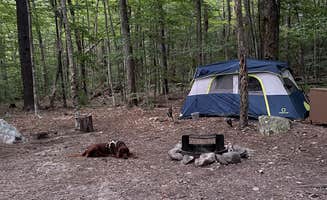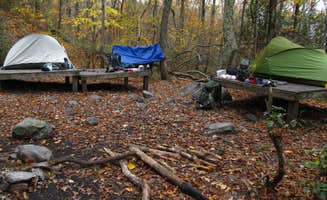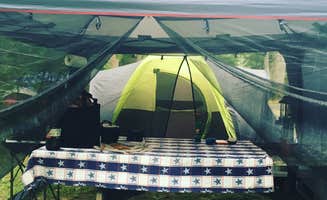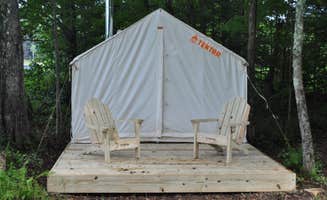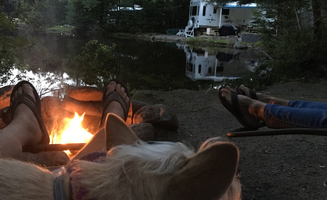Camping near Norfolk, Connecticut offers a mix of private and state forest accommodations across the Connecticut highlands. The region sits at elevations between 1,000-2,000 feet, creating cooler summer temperatures than surrounding lowlands. Most sites close from mid-October through mid-April due to harsh winter conditions, with nighttime temperatures often dropping below 40°F even in May and September.
What to do
Fishing the Farmington River: At Austin Hawes Memorial Campground in American Legion State Forest, visitors have direct access to the Farmington River, known for its trout fishing. "Excellent campground for tent campers. Right on the farmington river and off the main road with access to many many other favorable fishing spots," notes Tom C., who appreciated the "excellent wood/ice supply" available at the campground.
Hiking local trails: Beartown State Forest Campground offers several rustic hiking trails within its boundaries. "This spot has rustic hikes and good swimming, plus relatively secluded campsites," according to reviewer C.A. Trails range from beginner-friendly loops to more challenging terrain.
Swimming in natural areas: Tolland State Forest Campground provides swimming opportunities in Otis Reservoir. "The swimming area is small but sandy, great for kids," reports Nicole G. The water remains cool even in summer months, typically reaching 70°F by late July.
What campers like
Privacy between sites: While not all campgrounds offer seclusion, some sites at White Pines Campsites provide more separation. "We stayed at site T3 and it was spacious and spread out from other tent sites. There was a tiny creek meandering behind the site and the woods just went on for miles," reports Sylvia P.
Waterfront camping opportunities: Many visitors seek out waterfront sites for direct water access. At Tolland State Forest Campground, "We have brought out kayaks and took off right from the site. There are rocks to get into the water but the water is clean and not mucky," according to Rebecca D., who notes "plenty of vegetation between sites."
Convenient facilities: Cozy Hills Campground receives praise for its well-maintained amenities. "Bathrooms are very clean but very far apart," notes Ann S. The campground offers "fresh wood chips and groomed gravel" at sites according to Jon R., who appreciated the separate loop for short-term campers.
What you should know
Bear activity: Bears are common throughout the region. Sylvia P. reports, "We and several other neighboring campers spied a pretty big black bear not far enough away in the late morning hours" at White Pines Campsites. Most campgrounds provide bear boxes for food storage.
Limited cell service: Many campgrounds in the Norfolk area have poor connectivity. At Austin Hawes Memorial Campground, Katherine P. notes "no cellphone service, which is either a good or bad thing, depending on how you feel about it." Prepare maps and information in advance.
Weekend crowds: Taconic State Park - Copake Falls Area sees heavy visitation on weekends due to its proximity to major cities. "This was a truly great campground, but it's proximity to NYC draws large crowds on weekends," notes John E., who recommends visiting on weekdays when possible.
Tips for camping with families
Look for organized activities: Lone Oak Camp Sites offers extensive programming for children. "Tons of kids activities to keep the little ones busy," shares Ashley A., while Courtney D. mentions it has "Crafts And events" making it "Great for kids."
Consider swimming options: Some campgrounds offer family-friendly swimming areas. "The pool is very nice for families - with no deep end, really safe for younger kids," notes Ann S. about Cozy Hills Campground, which provides a safer alternative to natural swimming areas.
Bring insect protection: Bug activity can be significant, particularly in wooded sites. "In the summer, this place is mosquito central, so bring lots of bug spray or be eaten alive!" warns Katherine P. about Austin Hawes Memorial Campground. Ticks are also common throughout the region.
Tips from RVers
Check site dimensions carefully: At Prospect Mountain Campground, the terrain can limit suitable RV sites. "The sites on the water looked nice- hoping to try for that next time!" mentions Stephanie, suggesting that waterfront sites may accommodate smaller RVs better than others.
Confirm electric requirements: Different campgrounds offer varying hookup options. Natalie N. recommends that at Lone Oak Camp Sites, you should "be careful on the map for what site has what amenities, and make sure to double check power requirements because it's not labeled on the sites and it varies."
Consider dumpsite availability: Not all campgrounds offer sanitary dump stations. While places like Lone Oak Camp Sites and White Pines Campsites provide this service, many state forests have more limited facilities. Prepare to possibly travel to dispose of waste if staying at smaller campgrounds.


